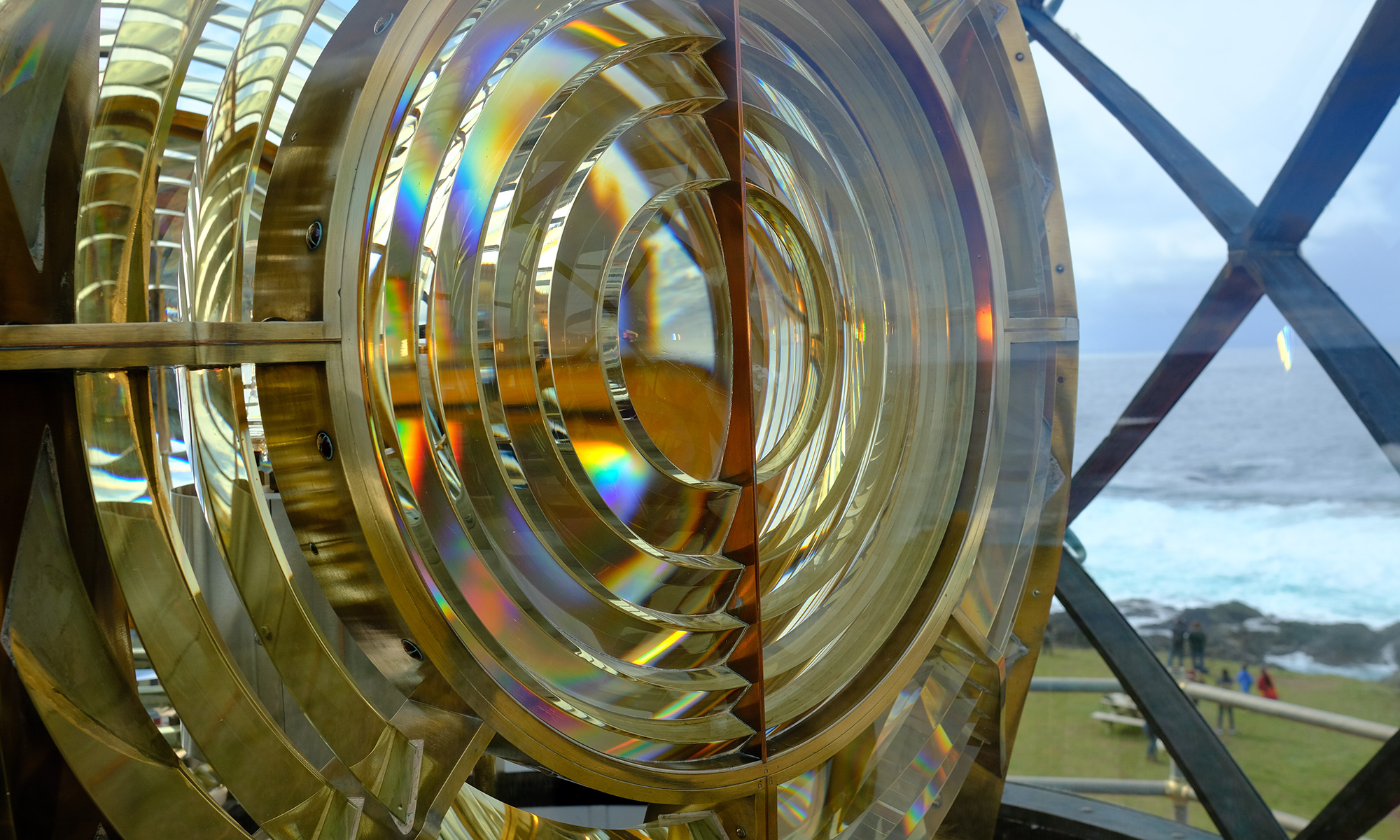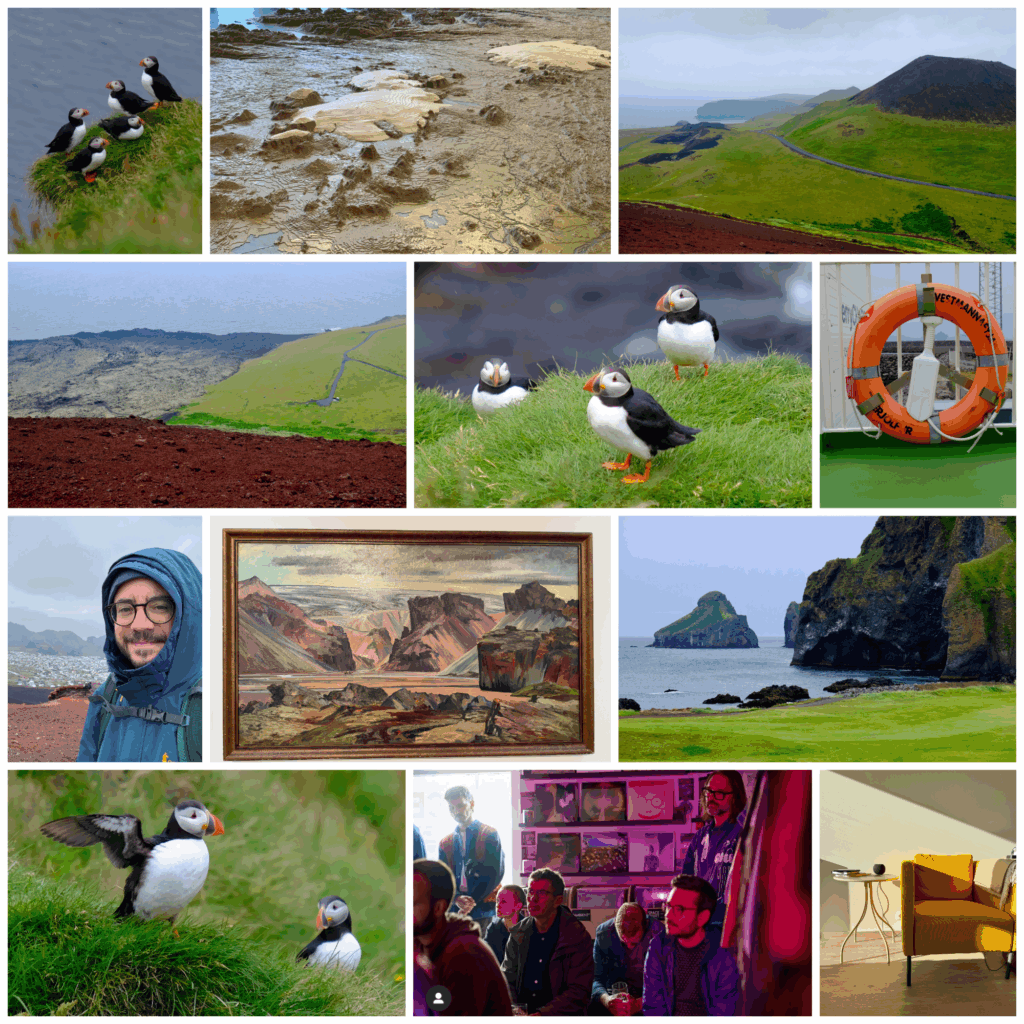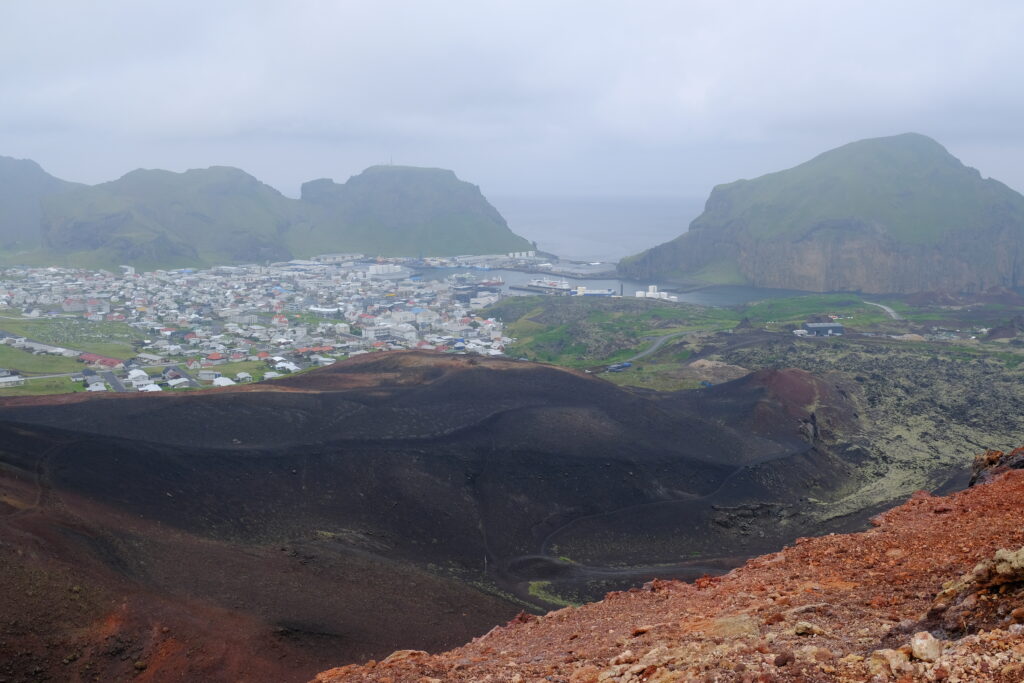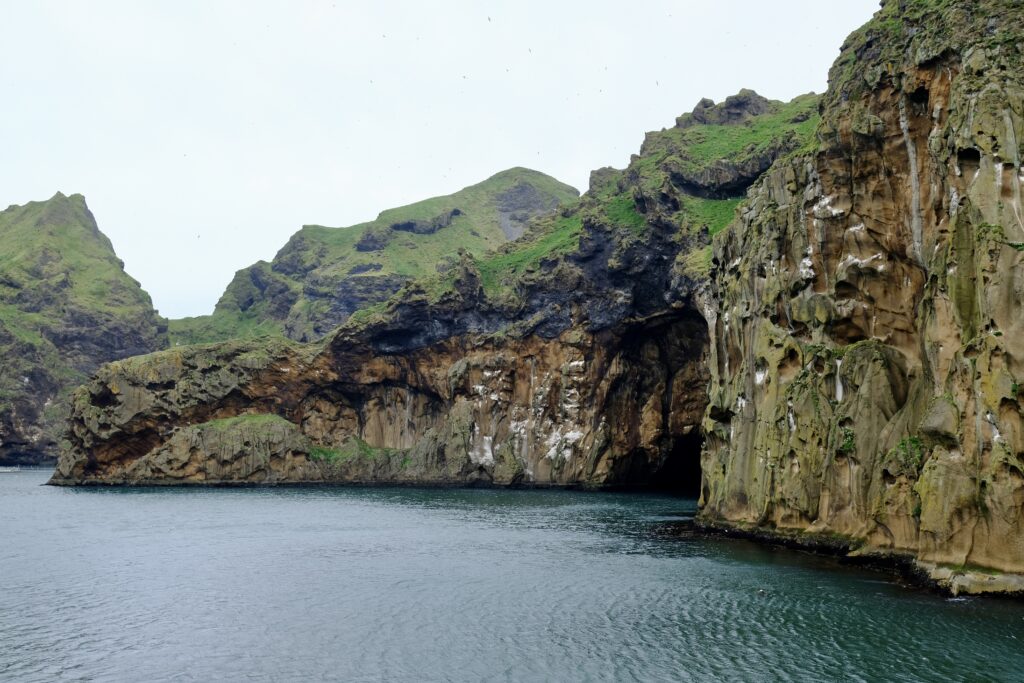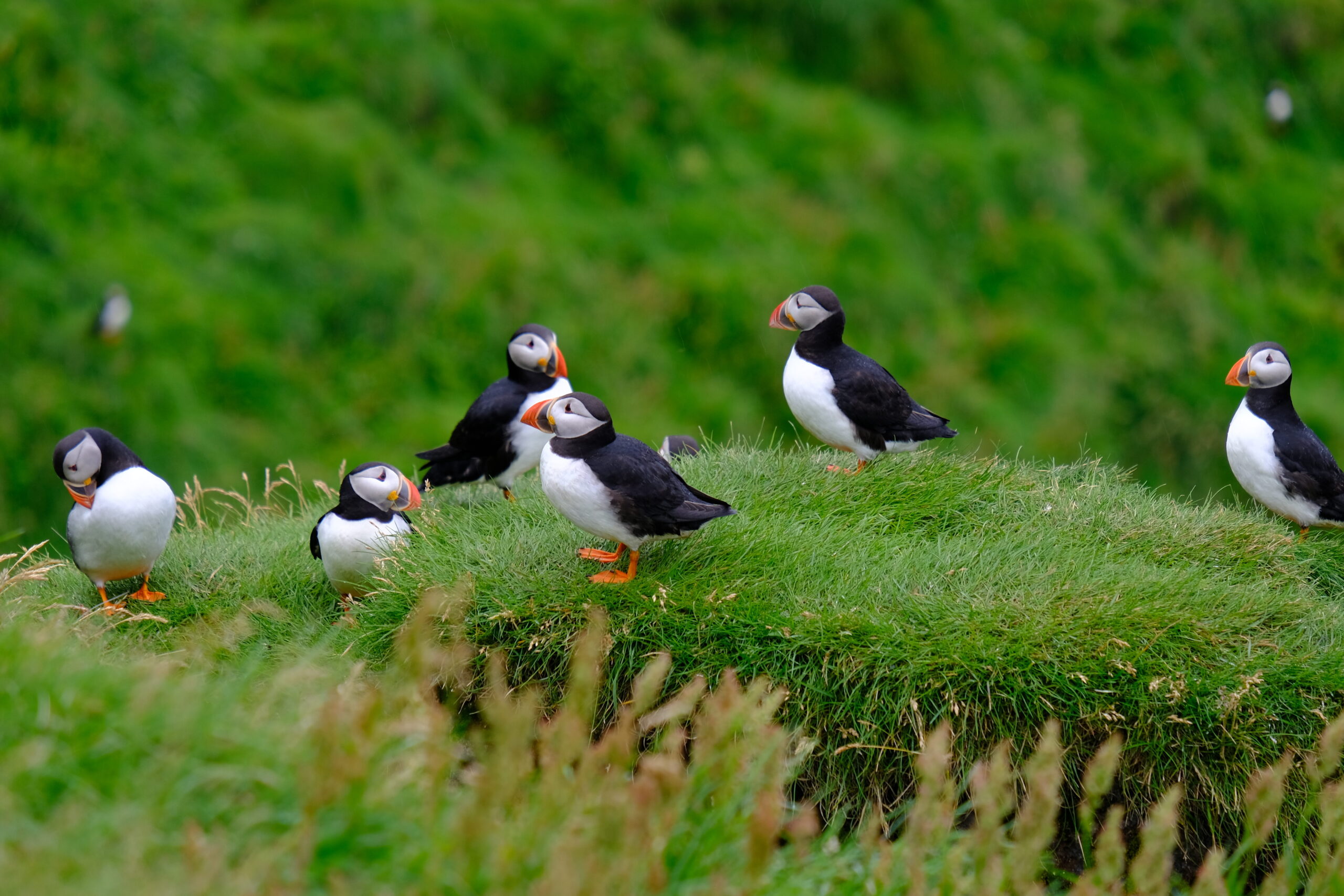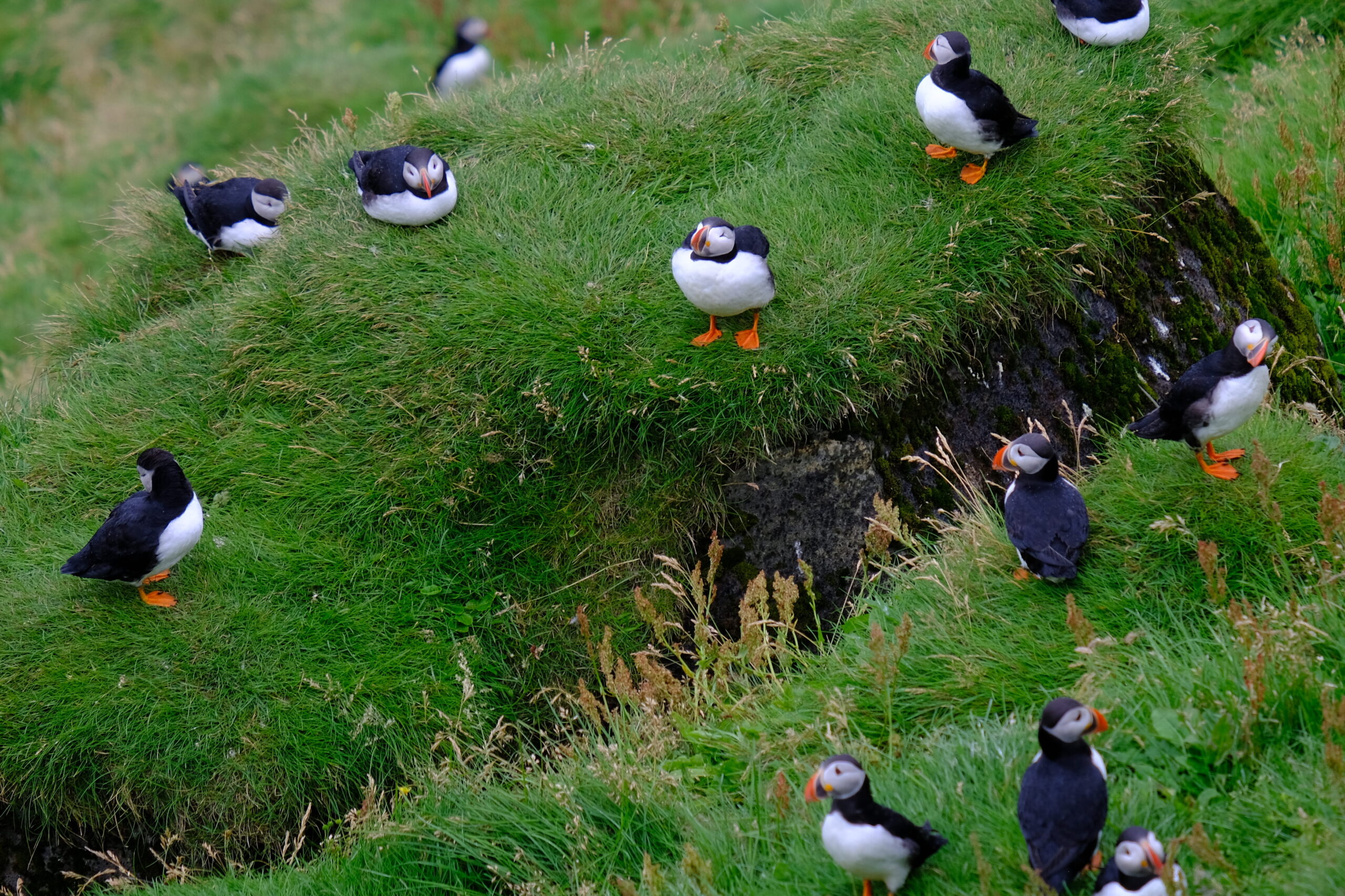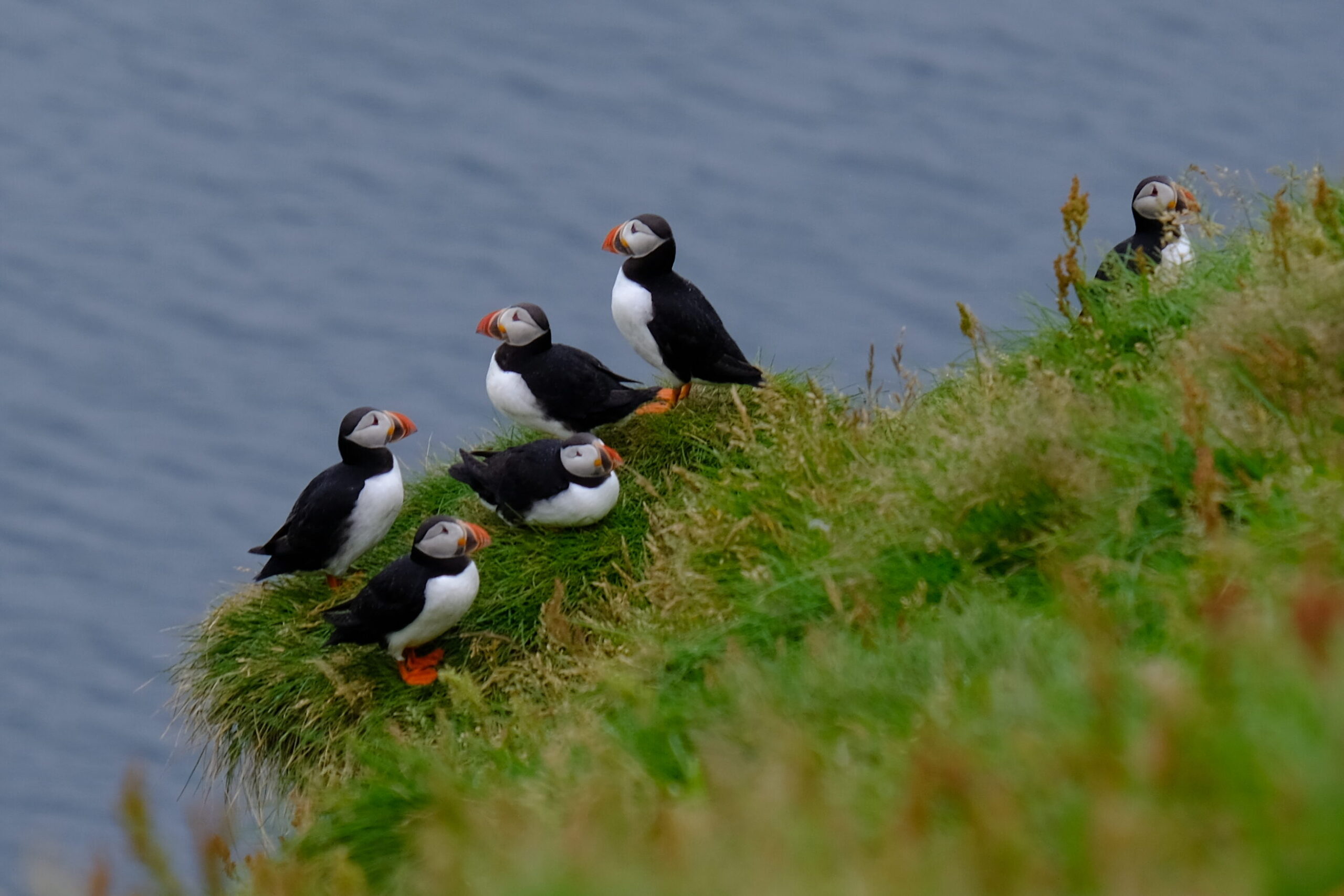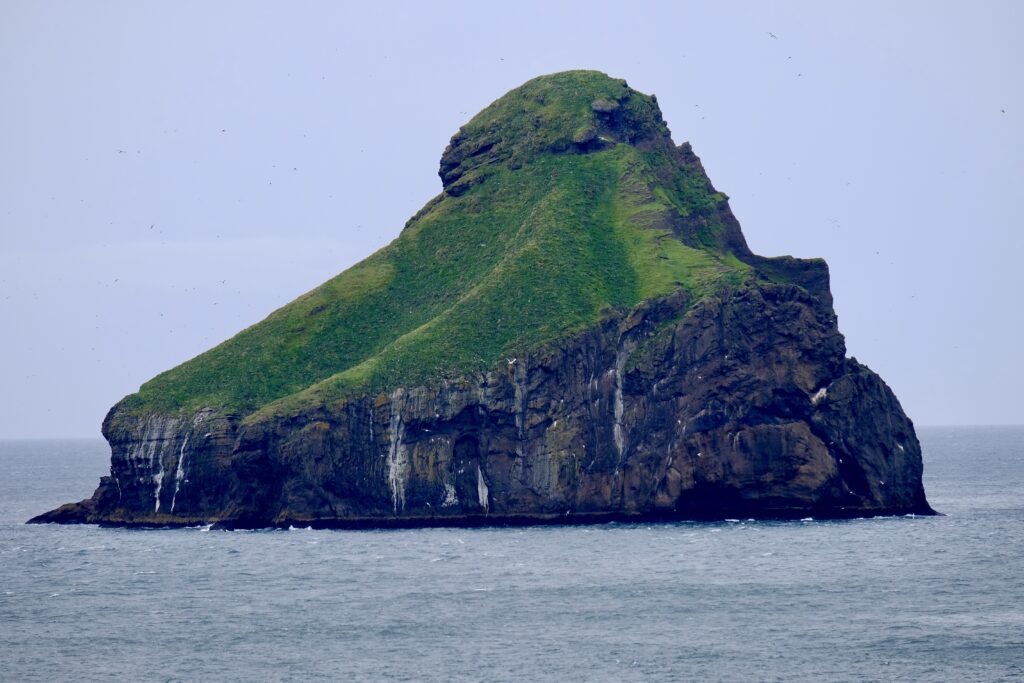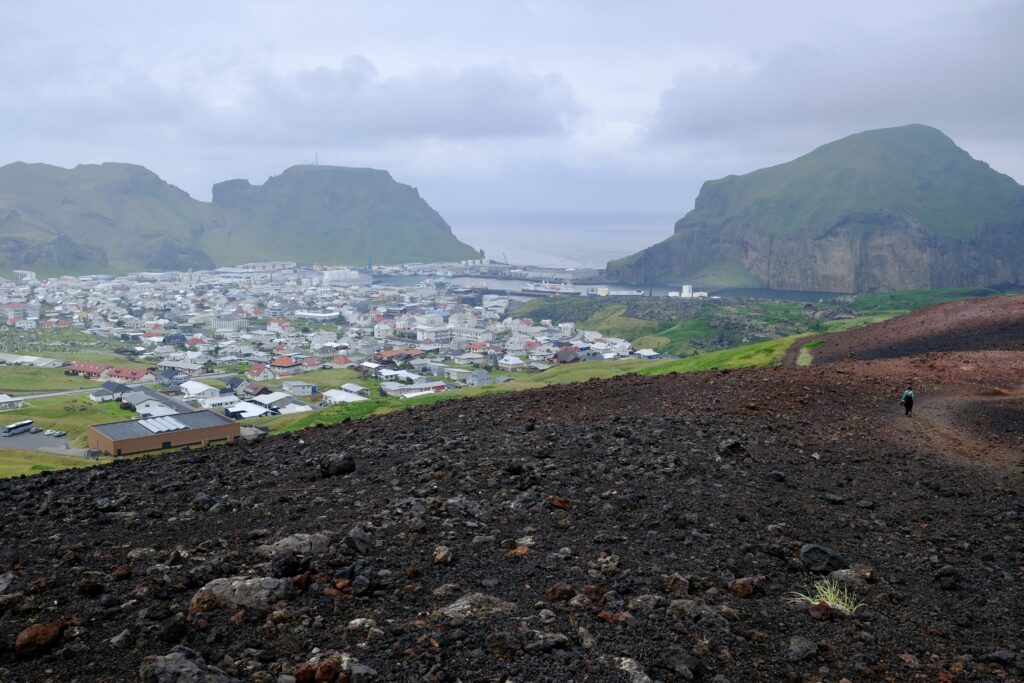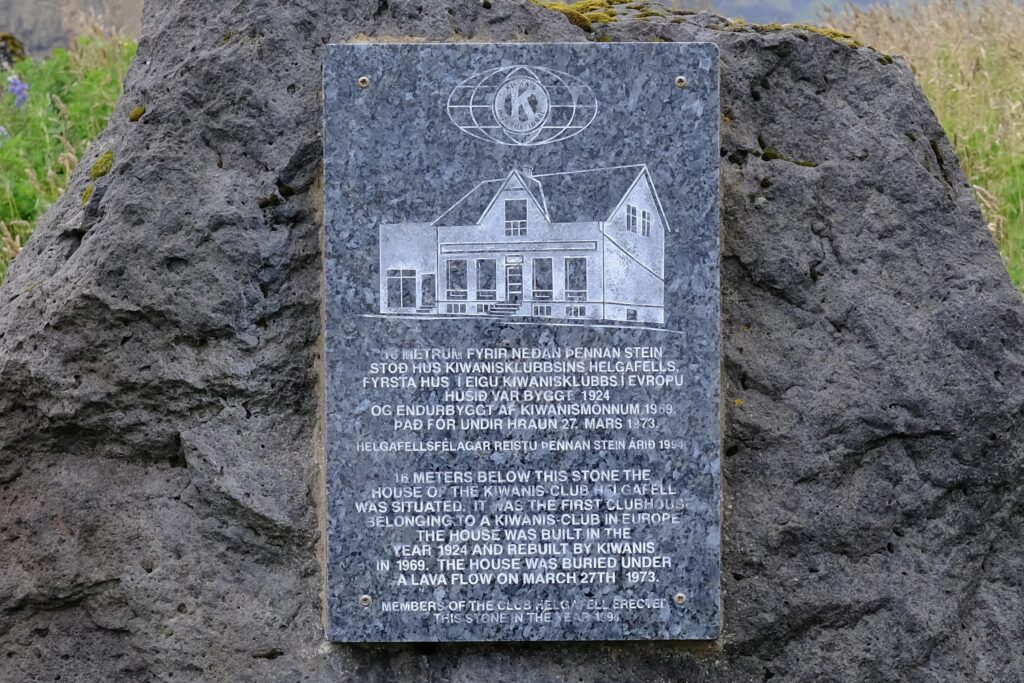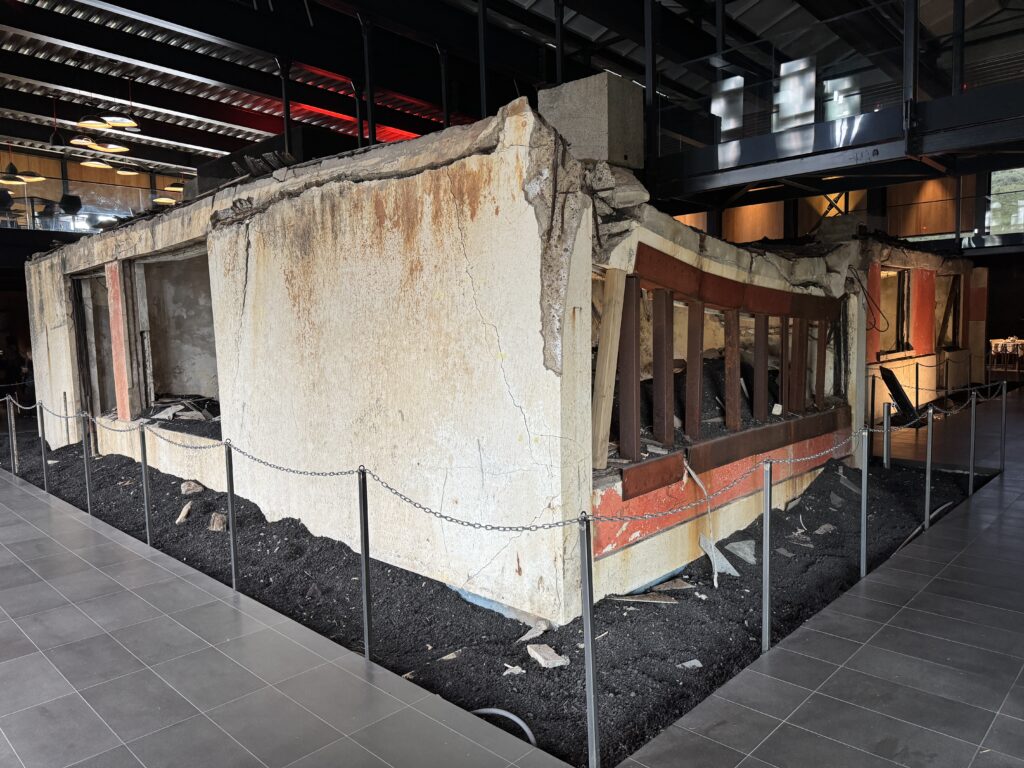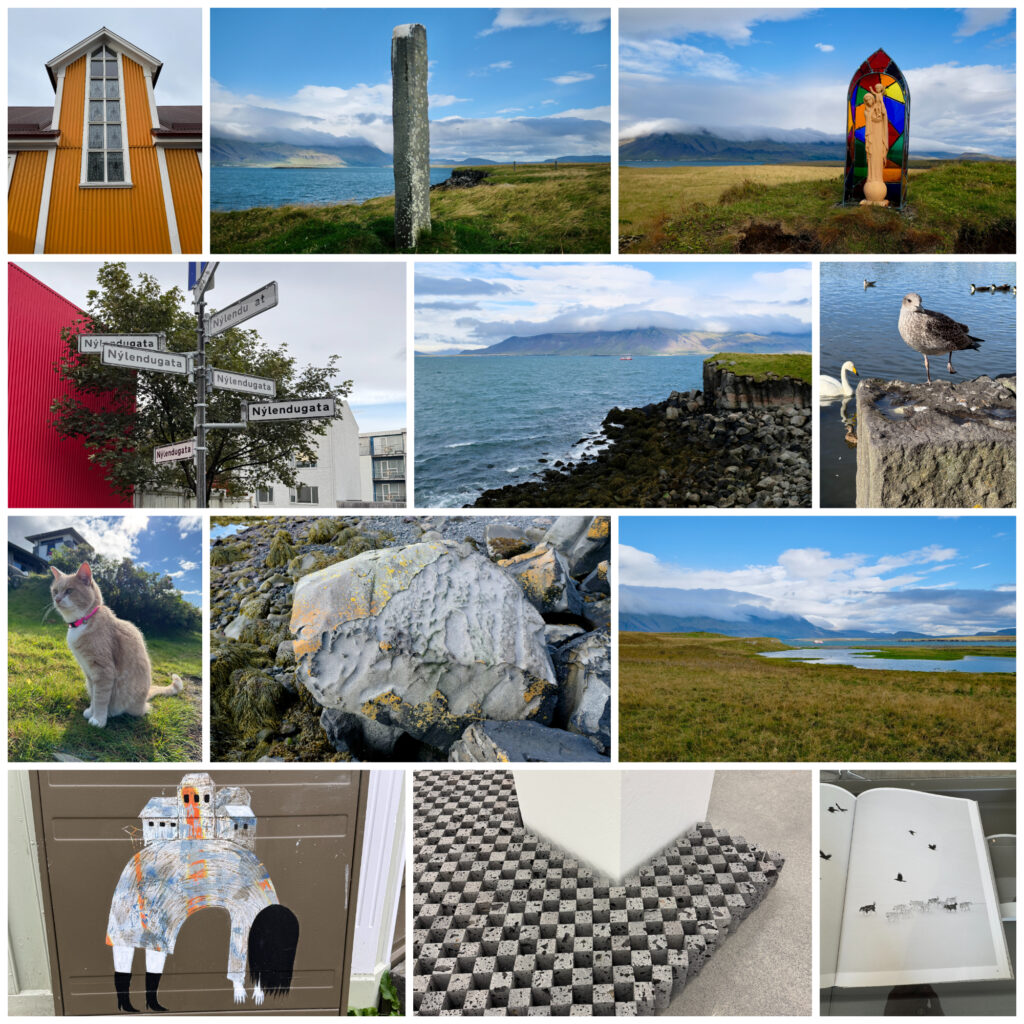
The ferry to Viðey Island operates on two different schedules labeled “summer” and “winter,” and like most other seasonal timetables in Iceland, winter begins on September 1st. So my trip this week to the uninhabited island, just off the coast of Reykjavík, was limited to the 3-hour window in which the ferry operates off Skarfabakki pier. While it’s the largest island in the Kollafjörður Bay, at 0.62 square miles it can be almost fully explored in those 180 minutes. The tiny and infrequent ferry, combined with my relatively greater than average willingness to traverse uneven terrain in high winds, means that I regularly felt like I had the place to myself.
And what a place. A five minute boat ride from a dense industrial port, with a full view of the city skyline, but it feels like you’ve been transported to the countryside. It’s certainly the most isolated and wild place you can find within city limits, and just distant and quiet enough for wildlife to relax in their perceived solitude, like the seal I spotted fully surfaced and sunning himself on a rock. The Viðey House greats you upon arrival, one of the oldest building in Iceland built in 1755 and fully restored into a cafe.
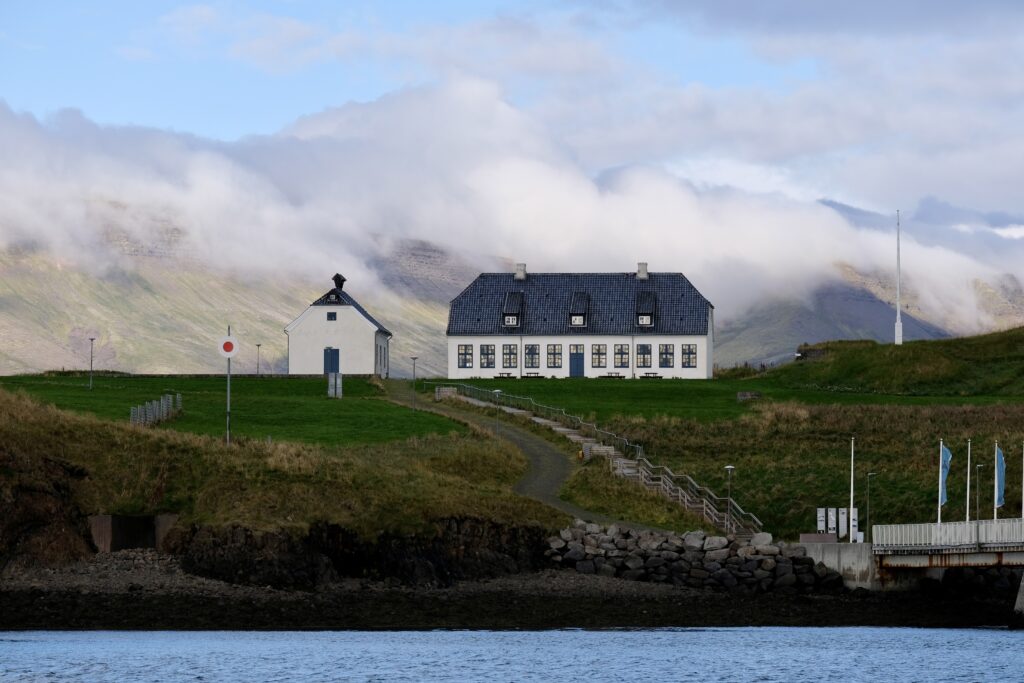
The Imagine Peace Tower is a short distance away, designed by Yoko Ono as a tribute to John Lennon. The words “Imagine Peace” are carved into the white stone in 24 different languages, and 15 embedded lights form a luminous nighttime tower. I thought that perhaps it was broken, since I’ve never seen it lit, but apparently it only operates from Lennon’s birthday (Oct 9) to the day he was shot (Dec 8), and then for 1-week periods around New Year’s and the spring equinox. So I’ll look for it then.
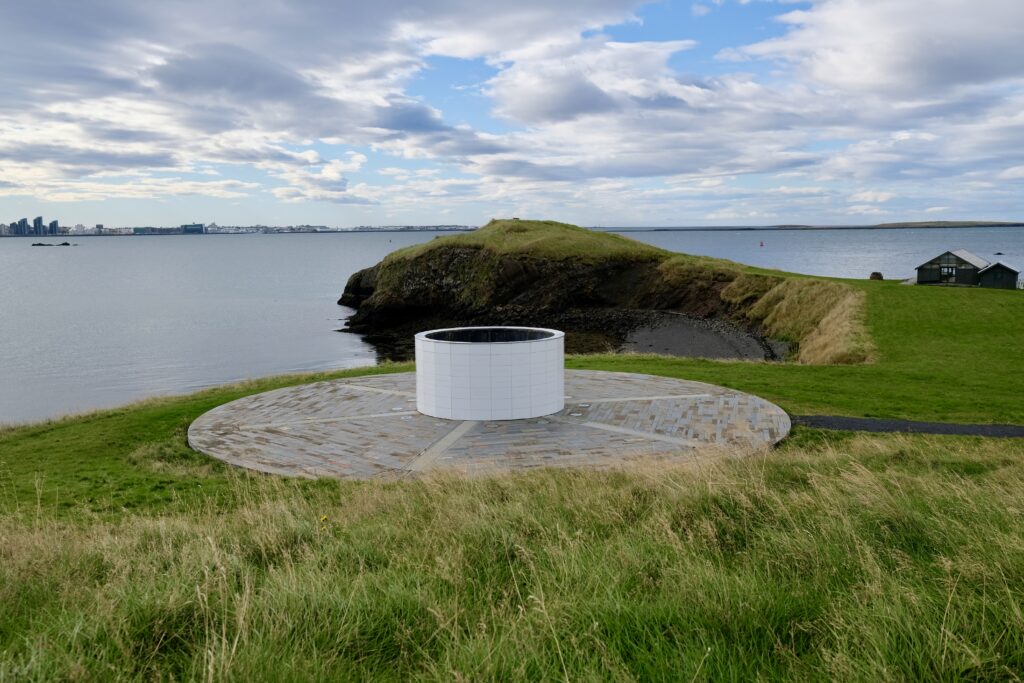
The western part of Viðey, connected by an isthmus to the main island, is the site of an artwork by Richard Serra called Áfangar, which was installed in 1990. It consists of 9 pairs of basalt pillars, where one is 4 meters in height and the other is 3 meters. But they are positioned in the landscape so that the shorter one stands 9 meters above sea level, and the taller of the pair is 10 meters above sea level. In this way, all the columns across the island are a consistent height.
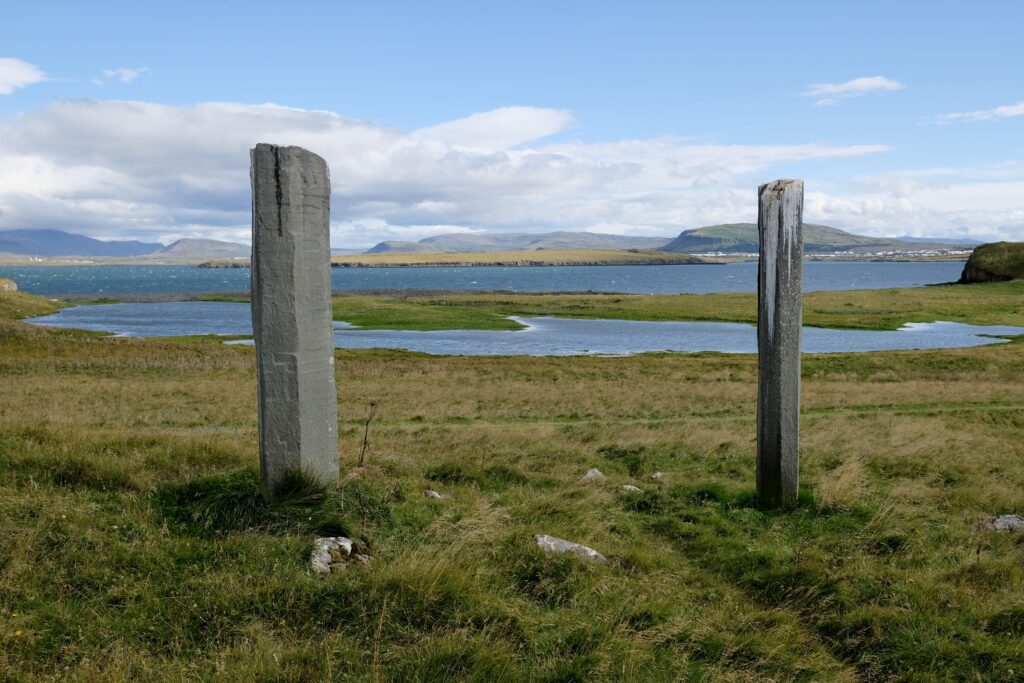
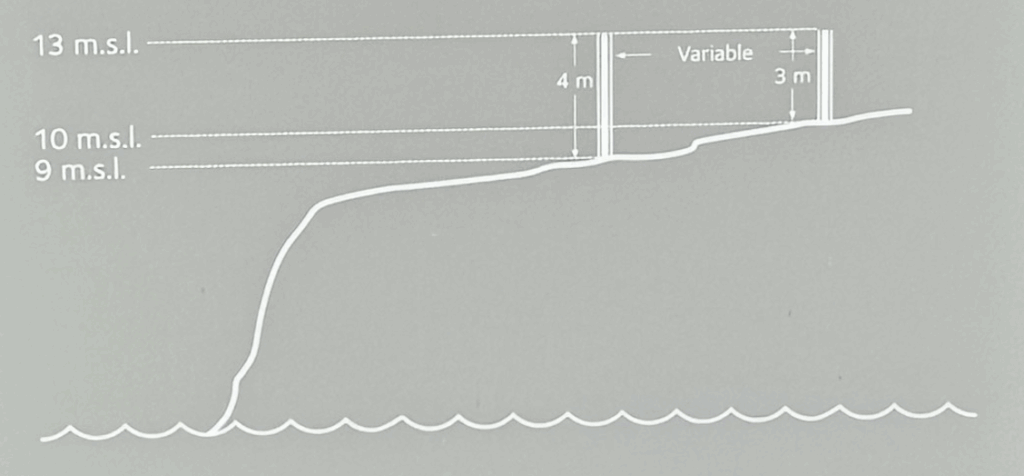
In general, it was just nice to wander around the island. To get a closer view of Mt. Esja, be surrounded by water, and walk through the grasses changing to autumn colors. My midwest brain is hardwired to anticipate the arrival of Fall color this time of year, and I’ve been curious to see how that shows up here.
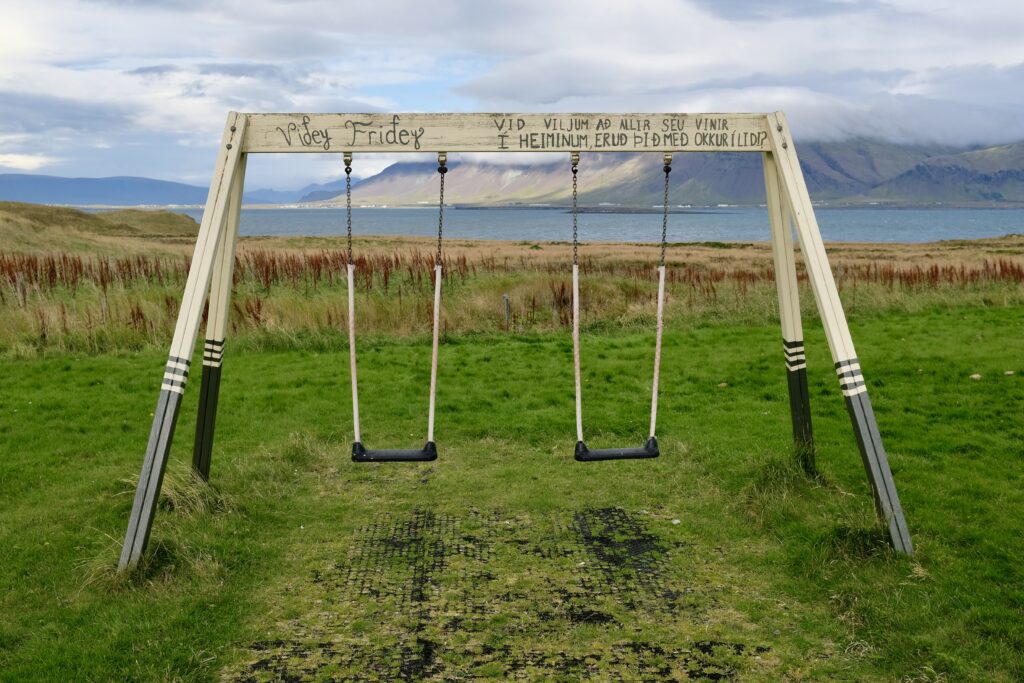
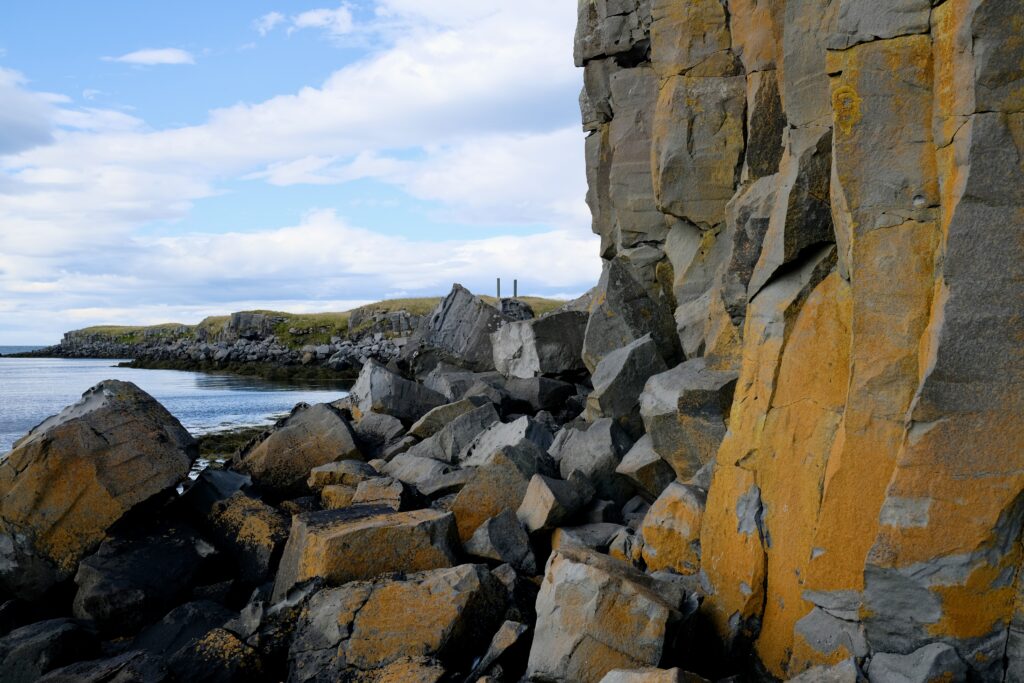
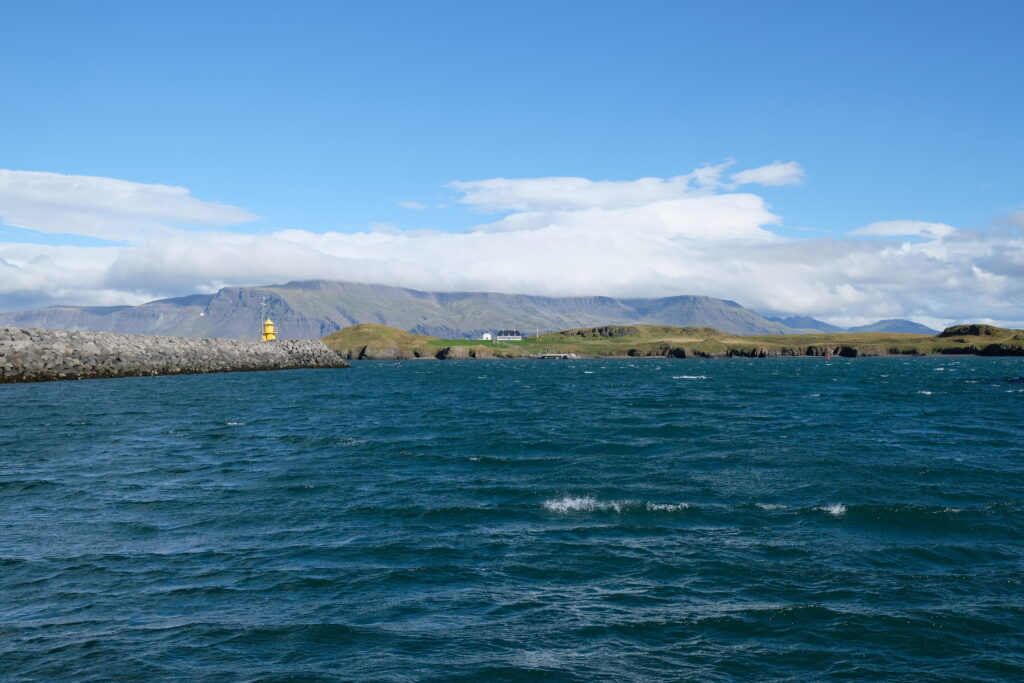
When I finish reading a book I might mentioned it the “Noted & Done” section at the bottom of these posts, and if you’re viewing the blog on a computer-sized screen you’ll see a sidebar that displays recent books pulled from my Goodreads account. But I wanted to draw more attention to, and heartily recommend, the new book by Bill McKibben Here Comes the Sun: A Last Chance for the Climate and a Fresh Chance for Civilization. In this relatively slim volume the renowned environmentalist not only makes the expected case that solar power is the best option for the health of our planet, but he shines a light on what most of us have missed — it is now also the cheapest option.
From the purview of Donald Trump’s climate-denying, fact-destroying, oil-industry-governed hellscape this cost tipping point for solar energy is easy to overlook. But apparently, in just the last couple of years, increases in solar cell efficiency and decreases in manufacturing cost at scale have have dramatically reduced the price of solar power. In the US, due to the previously mentioned context, this might be less true than in other countries. But that difference is now entirely artificial and driven by unnecessary barriers, from onerous permitting processes to tariffs on Chinese-made goods. But the rest of the world has noticed, and it’s dramatically changing their energy calculus. Take for example this surprising Wall Street Journal article from earlier this week, entitled Oil Giant Saudi Arabia Is Emerging as a Solar Power.
I do recommend reading the book, but for the highlights right away I’d suggest reading McKibben’s recent New Yorker article. There’s enough in that piece to open your eyes to the change that’s happening worldwide, where apparently people are deploying a gigawatt’s worth of solar panels — the equivalent of one coal-fired power plant — every 15 hours! It’s faster, cheaper, decentralized, repairable, recyclable, and clean. I honestly find very little to be optimistic about these days, so reading Here Comes the Sun was the first genuinely hopeful burst of excitement I’ve had in a while. There are obviously still lots of barriers, with Trump fighting like hell to make sure that his oil executive friends continue to profit as the world careens towards climate catastrophe. But when the social, and moral, and (finally!) economic incentives all align it gives me hope that the old regime is finally fragile enough to break.
A final plug to learn more — if the book or article are both too time consuming right now you can watch Bill McKibben’s interview with Amy Goodman on Democracy Now.
Noted & Done
- Met with someone from the Arctic Circle to discuss the possibly of being a delegate volunteer at their upcoming Assembly. I’m hoping that works out.
- Dropped the mini-course related to the above-mentioned Assembly. Upon further reflection I decided it wasn’t worth it as I’m going to attend no matter what and I don’t need credits. So now I’m down to a normal course load of 30 ECTS.
- Stopped by the Qerndu gallery to see some Ragnar Axelsson photos.
- Attended a screening of the Swedish sci-fi film Aniara (very dystopian!) as part of the Nordic-Arctic Space Futures Panel Discussion.
- Went to a lecture about the connections between architecture and music.
- Finished season 3 of Foundation. The first two seasons had so much scene setting to establish the incredibly complex back story. This latest season still introduced a ton of new characters but I feel like I was able to follow along and enjoy it more. I hear that season 4 has already been green lit.
